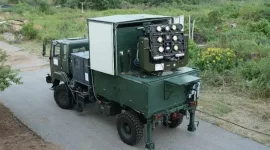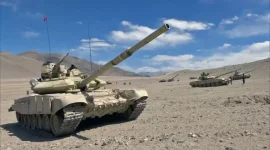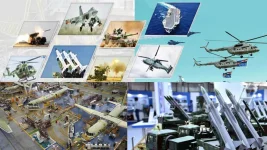- Views: 4K
- Replies: 13
In a development highlighting a significant evolution in India's defence manufacturing landscape, four prominent Indian technology firms have successfully passed a crucial technical evaluation for the detailed design and engineering of the airframe for India's first indigenous fifth-generation stealth fighter, the Advanced Medium Combat Aircraft (AMCA).
The companies involved are Infosys Limited, Tata Consultancy Services (TCS) Limited, L&T Technology Services (LTTS) Limited, and Cyient Limited.
The Advanced Medium Combat Aircraft (AMCA) is envisioned as a single-seat, twin-engine fighter jet capable of operating in all weather conditions and performing multiple combat roles. Its development is being managed by the Aeronautical Development Agency (ADA), an entity under the Ministry of Defence, with the primary user intended to be the Indian Air Force.
The aircraft is slated to incorporate sophisticated features such as advanced stealth technology to minimize detectability, the capacity for 'supercruise' (supersonic flight without the use of afterburners), thrust vectoring for enhanced manoeuvrability, and an internal weapons bay. The successful creation of the AMCA aims to place India among a select group of nations possessing advanced fifth-generation fighter aircraft technology.
During the technical evaluation phase, the companies' expertise in high-level engineering, comprehensive design analysis, and critical digital solutions was meticulously assessed. These capabilities are vital for the development of the AMCA's airframe, which is planned to be constructed with a significant proportion – between 60% and 80% by weight – of carbon-fibre composites (C-FC). This advanced material selection is intended to enhance the aircraft's structural strength, reduce its overall weight, and improve its maintainability.
The participation of these major private technology companies, traditionally recognized for their contributions to information technology and general engineering services, signifies a transformative shift in India's defence ecosystem. This move fosters greater collaboration between established defence public sector undertakings (PSUs), like Hindustan Aeronautics Limited (HAL), and private enterprises.
Infosys Limited, a globally recognized IT services company headquartered in Bangalore, brings its substantial experience in digital transformation and engineering solutions powered by artificial intelligence. The company has prior involvement in the aerospace sector through projects with international aviation leaders such as Boeing and Airbus, and is expected to contribute advanced design and simulation capabilities to the AMCA program.
Tata Consultancy Services (TCS), a key part of the Tata Group conglomerate, will leverage its extensive global aerospace experience. This background includes providing engineering services to renowned international corporations like Rolls-Royce and Jaguar Land Rover. TCS’s specialized Centers of Excellence dedicated to Aero Structures and Avionics are poised to support the complex design requirements of the AMCA.
L&T Technology Services (LTTS), an engineering services subsidiary of the multinational conglomerate Larsen & Toubro, specializes in engineering research and development (ER&D) across diverse sectors, including automotive, aerospace, and the industrial Internet of Things (IoT). LTTS's experience in manufacturing plant engineering and its proficiency with advanced materials make it well-equipped to address the AMCA's stringent structural demands.
Cyient Limited, a Hyderabad-based firm acknowledged for its leadership in aerospace engineering, excels in product lifecycle management and sustainable design approaches. The company reports that its engineering expertise contributes to a notable share of the world’s fuel-efficient aircraft engines. Cyient's proficiency in avionics and digital solutions is anticipated to bolster the technological sophistication of the AMCA.
While these private sector companies bring cutting-edge technological capabilities to the table, some industry observers have pointed out their comparatively limited direct experience in the specific domain of defence airframe manufacturing when contrasted with traditional aerospace firms. However, their successful navigation of the technical evaluation underscores their potential to meet the AMCA program’s rigorous standards through innovation and collaborative partnerships.
The AMCA program, reported to be in its prototype development phase as of February 2025, is considered a cornerstone of India's ongoing defence modernization and self-reliance objectives. The subsequent stages of the bidding process will determine which company, or consortium of companies, will be tasked with leading the detailed design and engineering of the fighter's airframe.
The selected firm(s) will then work in close cooperation with Hindustan Aeronautics Limited (HAL), which currently remains India’s sole entity possessing the comprehensive infrastructure required for the final assembly of fighter jets.



